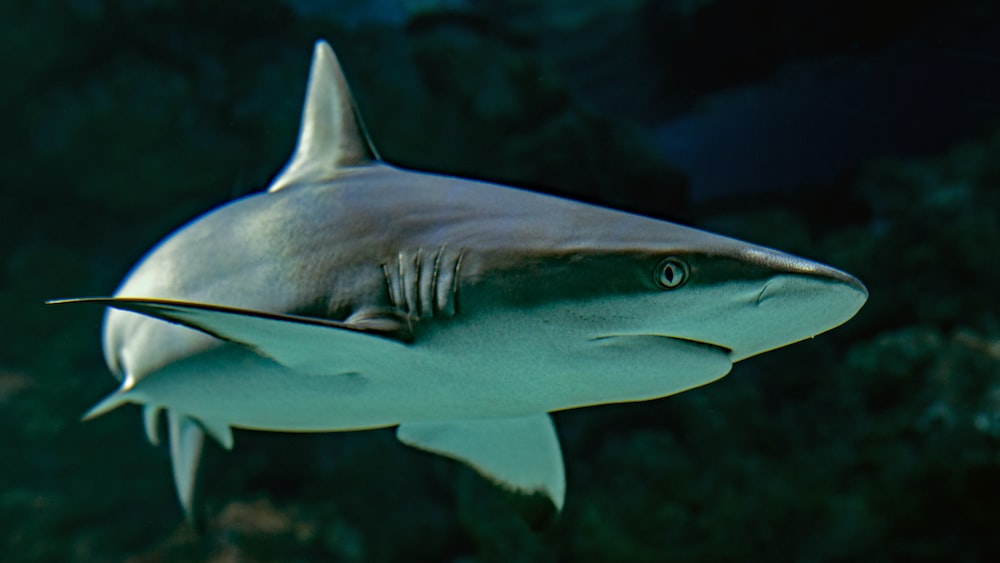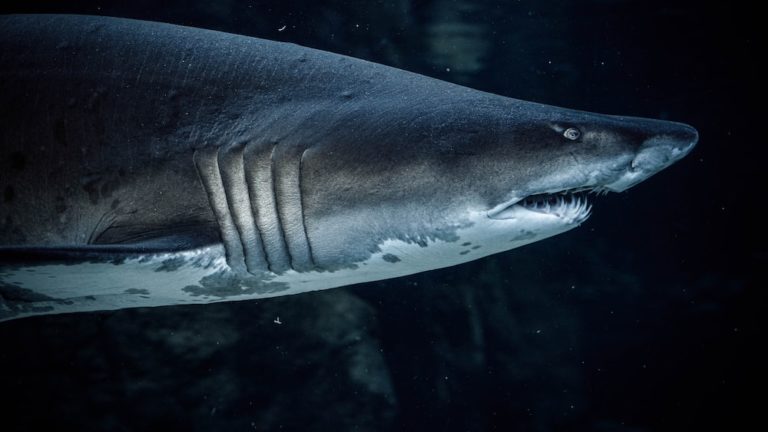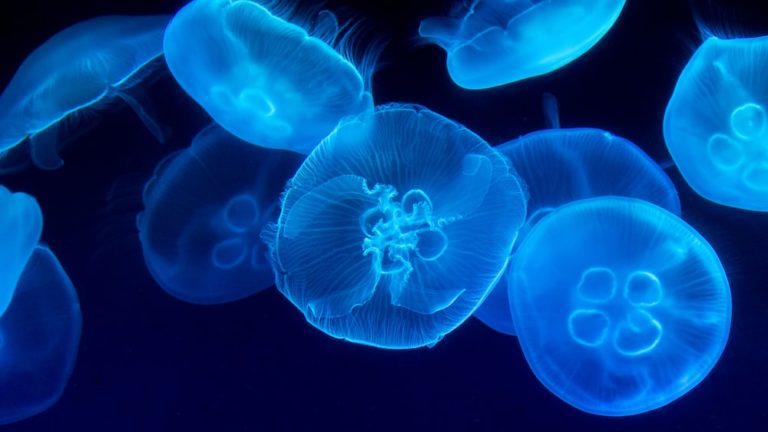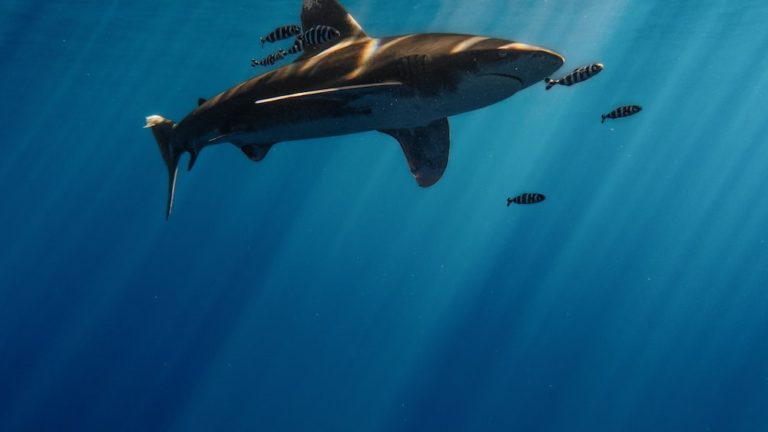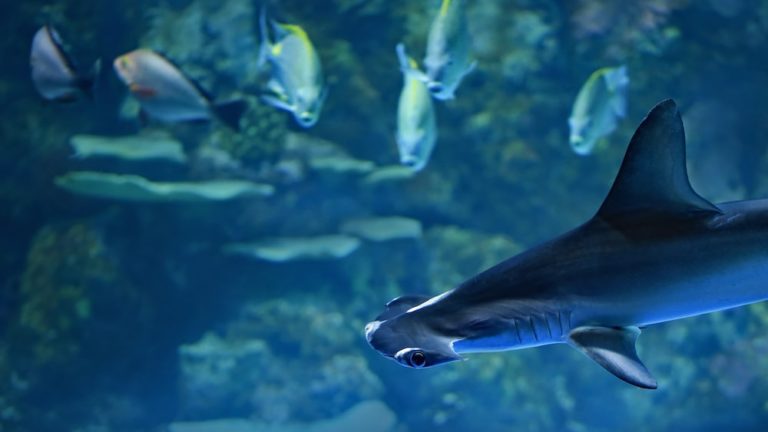Differentiating The Various Types Of Fins On Fish
Differentiating The Various Types Of Fins On Fish
Dive into the wondrous realm of ichthyology, where the waves of curiosity can lead us to uncover the various types of fins on fish, each a masterpiece of evolution fine-tuned for survival in the vast aquatic world. Each flick, flap, and flutter has a purpose, crafting a ballet beneath the waves that few seldom get to appreciate up close.
Key Points:
- Fish fins have unique roles and functions that contribute to their survival in the aquatic world.
- Different types of fins include dorsal fins, pectoral fins, pelvic fins, anal fins, caudal fins, and adipose fins.
- Each fin type serves a specific purpose, such as balance, maneuvering, stability, and propulsion.
- The shape and size of a fish’s fins are determined by genetic factors, habitat, and survival behaviors.
- The presence or absence of certain fins in fish can indicate their habitat and lifestyle preferences.
- Understanding fish fin designs provides insight into the complexity of marine life and fuels fascination for conservation efforts.
- The diversity of fish fin designs reflects millions of years of evolutionary adaptation to various ecological niches.
For marine life enthusiasts, eco-adventurers, and devoted conservationists, understanding these aquatic appendages is vital for a deeper appreciation of marine biodiversity. With each type of fin having its unique role, the complexity and ingenuity of fish design become ever more astonishing. It’s a tale not just of biology but of adaptation and survival, unfolding across the seascapes of our blue planet.
Join me, as we explore these natural underwater sailers, and delve into the distinctions and functions that make each fin an essential asset to fish. We’ll slice through the waters of knowledge with the precision of a dorsal fin, navigating the broad range of adaptations that have allowed fish to become masters of their marine domains.
Exploring the Diversity of Fish Fins
The diversity of fish fins is as vast and deep as the oceans themselves. Each species flaunts a unique arrangement of these aquatic limbs, revealing stories of their lifestyle and habitat. As we swim through the sea of information, we’ll uncover how these appendages contribute to the elegance and efficiency of fish, evidencing the sheer brilliance of nature’s design.
The Role of Fins in Fish Anatomy and Behavior
Fish fins can be likened to the tools of an artisan, each crafted to perfect the art of underwater life. Their roles encompass a variety of functions, from maneuvering through tight crevices to maintaining a poised hover in the current.
Fins are pivotal in expressing fish behavior. Courtship displays, territorial defense, and environmental interaction are all areas where fin use is as varied as the fish themselves. They serve as both wing and rudder, enabling fish to navigate the vast and varied seascapes of our oceans.
Just like an artisan’s tools, fish fins are essential for maneuvering, expressing behavior, and navigating the oceans, playing a pivotal role in their underwater lives.
An Overview of Common Fin Types
When one thinks of the types of fins on fish, a fascinating array unfolds before us. Let’s dip our toes into this ocean of knowledge:
- Dorsal fins set the stage for balance and offer protection.
- Pectoral fins, much like the hands of a conductor, guide and steer.
- Pelvic fins play a subtle, yet vital role in stability.
- Anal fins, often overlooked but integral for a stable swim.
- Caudal fins act as the propellers, driving fish forward with gusto.
- Adipose fins, shrouded in a bit of mystery, hint at evolutionary tales untold.
Each type of fin contributes to the dynamic range of abilities that allow fish to thrive in their underwater ballet.

Dorsal Fins: The Balancers and Protectors
Dorsal fins are the quintessential emblems of fish, often the first image conjured when one thinks of a fish silhouette. Serving as both sentries and stabilizers, these eminent fins are critical for the poise and safety of their bearers.
Variations in Dorsal Fin Structures
Let’s cast our gaze upon the dorsal fin, that iconic marine monument that rises like a crest from the backs of fish. While their primary function appears consistent, the variation among species is as wide as the ocean’s depths.
Single, double, or even triple dorsal fins can be spotted, each with its own, often species-specific morphology and purpose. Some brandish elongated spines, while others boast flexible rays, each variation speaking volumes about the life and habitat of the fish.
Just like the diverse dorsal fins of fish, each person has their own unique qualities and strengths that reflect their life experiences and environment.
The Significance of Dorsal Fins in Fish Stability
In the aquatic waltz of waves, the dorsal fin provides the keel and counterbalance, keeping fish upright and on course. Think of it as the sails to the wind, catching the currents and ensuring that fish do not roll over like a ship in a tempest.
Their positioning on the body is no coincidence; it’s a design perfected by millions of years of evolutionary trial and error. Dorsal fins ensure that, as fish dart and dive, they do so with the grace of an underwater acrobat, all thanks to their top-mounted fin.
Pectoral Fins: The Navigators of the Water
The pectoral fins play the part of nautical navigators, their movements as intricate as the steps of a seasoned tango dancer. With finesse and precision, these fins guide fish through their three-dimensional habitat with the ease of a bird in flight.
The Function of Pectoral Fins in Maneuvering
The pectoral fins, located on the sides of a fish’s body, are its underwater wings, granting them the gift of direction. They tilt and pivot, allowing fish to rise and sink, to stop with sudden precision, or to make sharp turns to elude predators or snatch prey.
Used constantly during swimming, these fins might not provide the main thrust, but without them, a fish’s directional control would be as unpredictable as a compass in a magnetic storm.
Different Pectoral Fin Shapes and Their Advantages
Nature’s designs are never one-size-fits-all, and the pectoral fins of fish are a testament to this truth. There’s a diverse palette of shapes and sizes, each fin cut from a cloth that best suits its wearer’s lifestyle.
Streamlined and pointed fins allow for burst speed, essential for open-water hunters. Alternatively, the broad and rounded fins favor maneuverability and are a treasure for bottom dwellers manipulating complex seabed terrains.
Pelvic Fins: The Stabilizers
Pelvic fins may not have the grandeur of dorsal fins or the dynamism of pectoral fins, but their contribution to a fish’s stability is as foundational as the roots of an ancient tree.
The Importance of Pelvic Fins in Positioning
Pelvic fins are often the unsung heroes of the fin ensemble, laying low and ensuring fish maintain just the right attitude in water. Positioned beneath the body, these fins are akin to the landing gear of an aircraft, allowing fish to control their pitch and hover with delicate precision.
Through subtle movements, they provide balance and stability, which are especially critical during feeding, when the fish might need to be stationary or make fine positional adjustments.
Pelvic fins play a crucial role in helping fish maintain balance and stability in the water, similar to the landing gear of an aircraft.
How Pelvic Fins Aid in Substrate Interaction
Interacting with the substrate is a part of many fish’s daily routines, and, in these moments, pelvic fins take a lead role. They function as stabilizers when a fish settles on the sea bottom or amongst aquatic plants, acting similar to the stands of a tripod, providing a steady base for the body.
These fins can even be specialized, like in the case of the modified pelvic fins of the goby, which form a suction cup for adhering to slippery surfaces. Such fin modifications showcase a profound synergy with their environment, much like the hand of a potter is shaped by the clay it molds.
Anal Fins: The Additional Stabilizers
Anal fins are often fish’s unsung ballast, working in concert with dorsal fins to add an extra layer of stability and control to underwater navigation.
The Role of Anal Fins in Swimming Dynamics
Anal fins, those often-overlooked flaps located on the ventral surface towards the rear of so many fish, play a crucial role in the nuanced ballet of aquatic navigation. Much like a keel on a sailboat, they facilitate straight swimming and assist in fine-tuned movements, preventing the fish from rolling over during sharp turns or sudden stops.
For certain species, these fins also contribute to propulsion, acting in concert with their caudal companions to thrust the fish forward through their blue watery world. Thus, while they may not have the flashy reputation of their dorsal and caudal counterparts, anal fins are indispensable for the dynamic stability of fish during their underwater escapades.
Anal fins are crucial for the dynamic stability and fine-tuned movements of fish during underwater navigation.
Comparative Anatomy of Anal Fins Across Species
Peering into the depths of fish diversity, the anatomy of anal fins reveals a rich tapestry of form and function. In the realm of cichlids, for instance, a pronounced fan shape facilitates complex courting displays and territorial skirmishes, weaving an intricate underwater dance. Conversely, the streamlined anal fins of fast-swimming pelagic fish, such as tuna, serve as stabilizers to slice through the surf with bullet-like precision.
Further among the tangled kelp forests, the more sedentary benthic species boast broader and more flexible anal fins that act as anchors or even pseudo-limbs for traversing the rocky seabed. This diversity in fin design, carved by evolutionary pressures, demonstrates the adaptability of fish to their eclectic environments, attesting to nature’s ingenuity in survival.
Caudal Fins: The Propulsion Engines
Caudal fins serve as the powerhouses of the piscine world, propelling fish through their liquid realm with thrusts that echo the rhythms of the sea. These aqua-dynamic wonders vary from the V-shaped scissor of a shark to the flamboyant spread of a Betta’s veil, each type tailored to its bearer’s living conditions and locomotive needs.
The Impact of Caudal Fin Shape on Swimming Speed and Style
The design of caudal fins significantly influences a fish’s swimming performance. The crescent shape of a mako shark’s fin, for instance, allows for blistering speeds and breathtaking agility, perfect for the open-water hunt. Meanwhile, a sea-horse’s tiny, paddle-like caudal fin flickers tirelessly, well-suited to a life amidst the gentle sway of seagrass.
Among the coral reefs, you might spy a parrotfish, its broad, rounded fin efficiently chopping through the water in short bursts, painting strokes of vibrant color against the mosaic of the reef. It’s clear that nature’s designs ensure that every caudal fin plays a part in the fish’s survival strategy, tailored to their particular ecological niche.
Tail Fin Patterns and Their Evolutionary Adaptations
The evolutionary journey of fish is chronicled in the diverse patterns and shapes of their caudal fins. The forked tails of pelagic speedsters stand testament to the survival need for high-octane pursuits, whittled by eons into streamlined perfection.
In stark contrast, one might observe the round caudal fin of a lionfish, more a tool for maneuvering in tight reef spaces and deterring predators with its visually arresting appearance. Meanwhile, deep in the ocean’s abyss, where light is a stranger and currents rare, eel-like species brandish wispy tails that call less for speed than for stealth and precise navigation across the shadowy seabed.
The diverse patterns and shapes of fish caudal fins reflect their evolutionary journey and the survival needs of different environments.
Adipose Fins: The Enigmatic Fins
The adipose fin, a small, fleshy appendage without rays, typically found between the dorsal and caudal fins, remains a bit of a marine mystery. Despite being a common fixture in certain fish families, such as trout and catfish, its purpose is not always clear.
Theories Behind the Function of Adipose Fins
Some theories suggest that adipose fins may play a role in the detection of changes in water flow, acting as sensory structures that help fish navigate murky waters or avoid obstacles. Other hypotheses propose that they may have once served a purpose in ancestral species but have since become vestigial.
Despite these theories, the adipose fin’s true function is often elusive, and it could be that these seemingly insignificant flaps of flesh provide more subtle, yet critical, benefits to their bearers, still to be fully uncovered by marine scientists.
Adipose Fins Across Different Fish Families
When examining the presence of adipose fins across various fish families, we find that not all fish share this feature. Trout, salmons, and some varieties of catfish display these fins prominently, suggesting a clan-specific utility or evolutionary trait.
However, other families like members of the perch realm opportunely have shed this little fin. This diverse expression within the piscine community points to a fascinating evolutionary enigma, waiting to be unraveled by curious scientists and passionate ichthyologists alike.
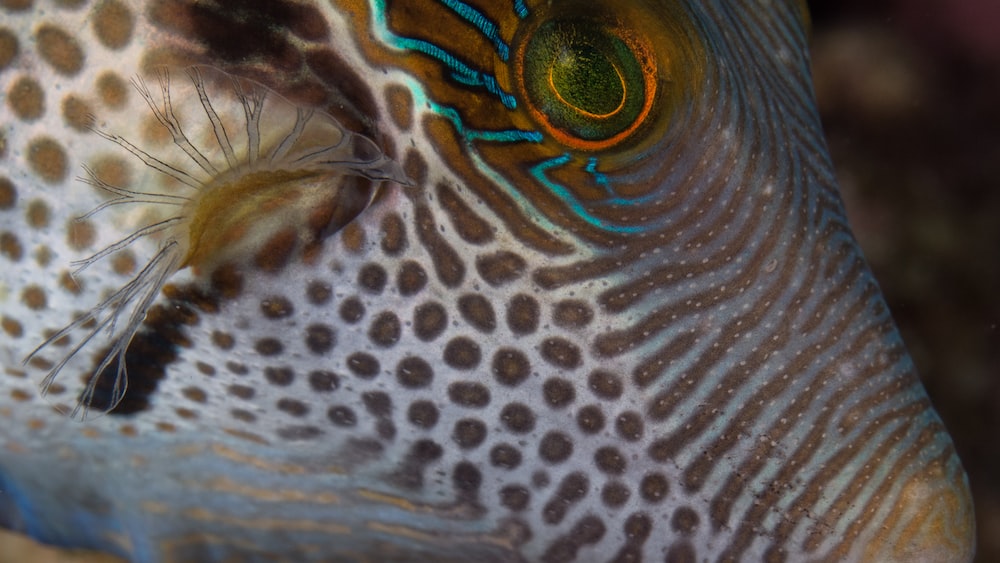
FAQs
1. What determines the shape and size of a fish’s fins?
The shape and size of a fish’s fins are determined by a variety of factors, including its genetic blueprint, habitat, and the behaviors required for survival. Every tail and fin constitutes an adaptation to the demands of their environment and lifestyle.
2. How do fins help fish survive in their environments?
Fins help fish survive in their environments by providing stabilization, maneuverability, and propulsion. These aquatic appendages are the tools with which fish confront currents, predators, and the search for sustenance in the vast blue yonder.
3. Can the type of fin indicate a fish’s habitat or lifestyle?
Certainly, the type of fin can indicate a fish’s habitat or lifestyle. Like a living hydrofoil, each fin configuration speaks volumes about the fish’s preferred waters and the ecological niche it occupies.
4. Are there any fish species without one or more of the typical fins?
Yes, some fish species have evolved without one or more of the typical fins. This is often a byproduct of their unique ecological adaptations, like the snake-like form of an eel which has forgone pelvic fins.
Conclusion
As we resurface from this deep dive into the types of fins on fish, we have become privy to the silent symphony that plays out beneath the waves – a melody of movement and balance, composed by the very fins we have explored. From the unquestionable flair of the caudal fin to the subtler tunes of anal and adipose fins, each plays a critical note in the lifesong of its wearer.
Reflecting on these diverse fin designs carved out by millions of years of evolution gives us a glimpse into the incredible complexity of marine life. As marine life enthusiasts and conservationists, understanding these designs not only fuels our fascination but also sharpens our resolve to protect these creatures and the environments they inhabit. So next time we dip our fins into the waters, let’s remember the intricate dance these fish perform every day and consider how our own ripples affect the underwater waltz.
Until we meet again, let’s keep diving into knowledge and splashing around in our efforts to conserve our blue planet. Swim you later,
Jasper Flynn.

